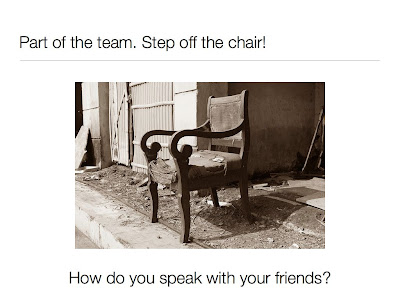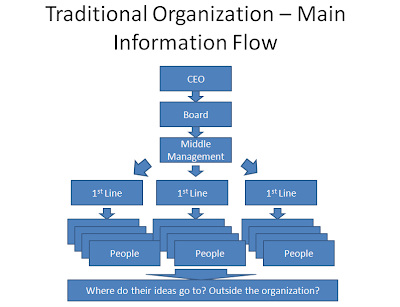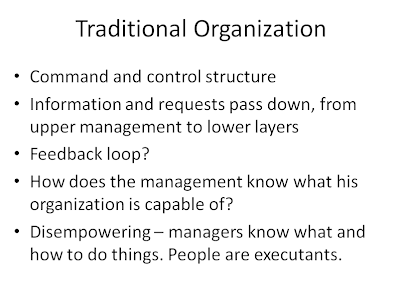Saturday,
Alina held a seminar on time management at the British Council, in Bucharest. I was invited to talk about the tools I use and about my perspective on the subject.
The why's of time management:
- Freedom
- Productivity: accomplish something of value by staying in the flow
- Peace of mind
- Time to learn and think - secure your future
- Focus on the important
Contents:
- The tools I use.
- Scalable vs non-scalable. Take time to think.
- Some pictures from the event.
The tools I use:
I prefer tools that give me the freedom to work from anywhere anytime and that are well designed (easy to use, simple, very good performance, nice looking). The idea is to gain time by focusing on what I want to do rather than on the "how"'s, and to leverage the moments of inspiration. For everyday use, I find very useful:
- Evernote
- Google docs
- Google calendar
Always connected. I prefer tools that have the ability to sync across multiple devices: iPhone, Windows desktop at work, my Mac at home, the Mac I use in Kyiv. They give me the freedom to work and spot opportunities wherever I am, whenever I choose, without having to carry a big luggage with me - most of the time, the iPhone should be enough.
I want my data with me all the time, yet I don't like carrying it around. Luckily, in the world of today, it is easier than ever to have access to my important documents from anywhere; much easier than it was 3 or 5 years ago. Because of the interconnected devices (phones, tables, laptops, desktop computers), hard drives and local storage are technologies that fade out in the past, in favor of the new cloud model. Cloud or web-based applications allow me to travel light yet instantly take notes whenever something interesting crosses my mind.
Usability and beauty. I like to be surrounded with easy to use hardware and software so that I can focus more on the "what"'s instead of the "how"s and spend more time in the flow. I also like to be surrounded with things that look good and feel right. Beauty is important as it makes work more pleasurable - the environment where I spend my time, my computer, my phone. Simplicity, beauty, usability, speed are all in the same pool of features that make my day brighter.
I don't like to be surrounded by too many objects. Complexity makes life sluggish. It stops me from focusing on the important.
When I have too many objects, applications or documents to manage, I waste time. Being disorganized wastes time and frustrates me. It is much easier and less time consuming to maintain order when I have only a few things around. It gets me productive, helps me stay in the flow, reduces the activities I have to perform. Simplicity is key to focus for me.
Take notes. Remembering stuff is extremely time consuming and inefficient. I gather all my thoughts, ideas, plans, in a note taking app (Evernote) or in a calendar to be reminded later. I see that stress comes from trying to remember what I have to do. If I keep the list only in my head, the only thing I accomplish is to be stressed that I will forget something. Taking notes keeps my peace of mind. Fortunately, today I can take notes anytime, anywhere: my iPhone, my laptop, my computer at work are great devices to sketch ideas for future review. And if I have them all interconnected and synchronized, then I am not bound by location.
Plan your week. A powerful tool I use is the calendar - it helps me plan the week ahead and also keep track of the activities I want to perform. It allows me to free my mind to execute what I have planned - the important items on my checklist - and eliminate the noise of urgency. A hidden advantage of the corporate calendar (Outlook) is that, if I plan my work week ahead using it, I can add there my own free slots for meetings, thus securing non-interrupted spans of time for important tasks. Also, having the week ahead organized in advance helps me say NO - another very powerful tool for managing my activity. Having a plan makes it easier for me to understand why say NO and explain it to the people around me. Of course, like any other tool, planning is useful if it is used on a regular basis.
Although I am a huge fan of communication technology (I have 2 phones, facebook, linked-in and twitter accounts, at work I use instant messaging, emails, etc, etc), I see technology as a double edged sword: on one hand it simplifies communication yet, on the other hand, it makes people consider that others are always available to interruptions. Answering all the requests on the spot, although rewarding in terms of instant gratification, have only the result of fragmenting time and put me out of flow - google "why work doesn't happen at work" on TED. Also, it places me in the "urgency" spot, in reactive mode. This is why sometimes, in the evening, I get home tired yet, when I think back, it seems that I have done nothing relevant that day. Managing interruptions is part of the time management routine and it is very important for me to consider flow when I plan my day.
Scalable vs non-scalable. Take time to think:
Very few people are constantly aware that consistently increasing their output does not come from working more but from working smarter. Ask yourself "if I want do double my value on the labour market, is it smart to work twice as much or find a different way of doing things that would allow me to work the same amount of time but produce twice the result?" That is the difference between scalable and non-scalable.
Many jobs, like ditching, are not scalable - that is, of course, until someone invents the excavator which renders every professional ditcher obsolete. Today, the hunt for scalable is fiercer than ever, as we need to be more productive, smarter, faster, more creative.
For managers it is handy to ask people to work more because it is something that can easily be measured - it can produce some foreseeable results NOW, whereas investing in planning, brainstorming, learning and thinking ahead for each member of the team are more difficult to estimate in terms of practicality. However, on the long run, working long hours daily does not generate a boost of productivity - maybe only a 10% increase which, for sure, does not sound at all impressive.
Why this talk? Because the underlying purpose of time management is to get more stuff done which, in terms, is linked to finding time to think deeper, learn more, search for new ways of doing the old in more productive ways. Time management is about making your work become scalable.
Many people say "I don't have time to plan or learn". Well, they don't because they are caught up in urgency. Ask yourself: how valuable is the work you do NOW? To whom? Is it really needed? Does it really matter? I believe that, because of frequent interruptions, emails, poor planning, a lot of the work we do is useless as it only creates noise, generates chaos and bad decisions - in a word, waste.
Plain execution is not scalable unless it is done by a machine and not a person. For the average employee, he or she simply cannot work twice as long as there is no daylight time to do so. Important is to work smart and say NO to the unimportant so that he or she can concentrate on adding true value.
Execution takes large amounts of time, most of the time underestimated. (I've heard "it is easy" so many times that I just can't believe it anymore). The best advice I could give someone, is to SELECT HIS EXECUTION WISELY and make sure it is, indeed, the most valuable thing he can do. To do this, she needs to think and learn - to reinvent her job.
People expect us to do some factory-style labour all the time because it is something that we are used to see. School teaches us to be busy and it surely is tempting to think that this is the easiest thing to do to increase productivity - work more. This is the "factory" culture and we need to find a new frame of mind to scale our work.
Today, perfect execution is more important than ever. The polish and quality needed to create products that sell is obtained through intellectual sweat and long hours put into them, in addition to passion and knowledge. I am a huge fan of perfection when it comes to execution. Learning also comes from doing and communication is extremely important although it adds another layer of complexity. So pick your battles wise, so that most of the effort is put in the right place. To do this, one needs constant thinking, planning, learning, reflection - to actively manage his or her time.
Some pictures from the event:
 |
| Myself, discussing the subject |
 |
Showcasing some tools: Google Calendar and Evernote
|




















































